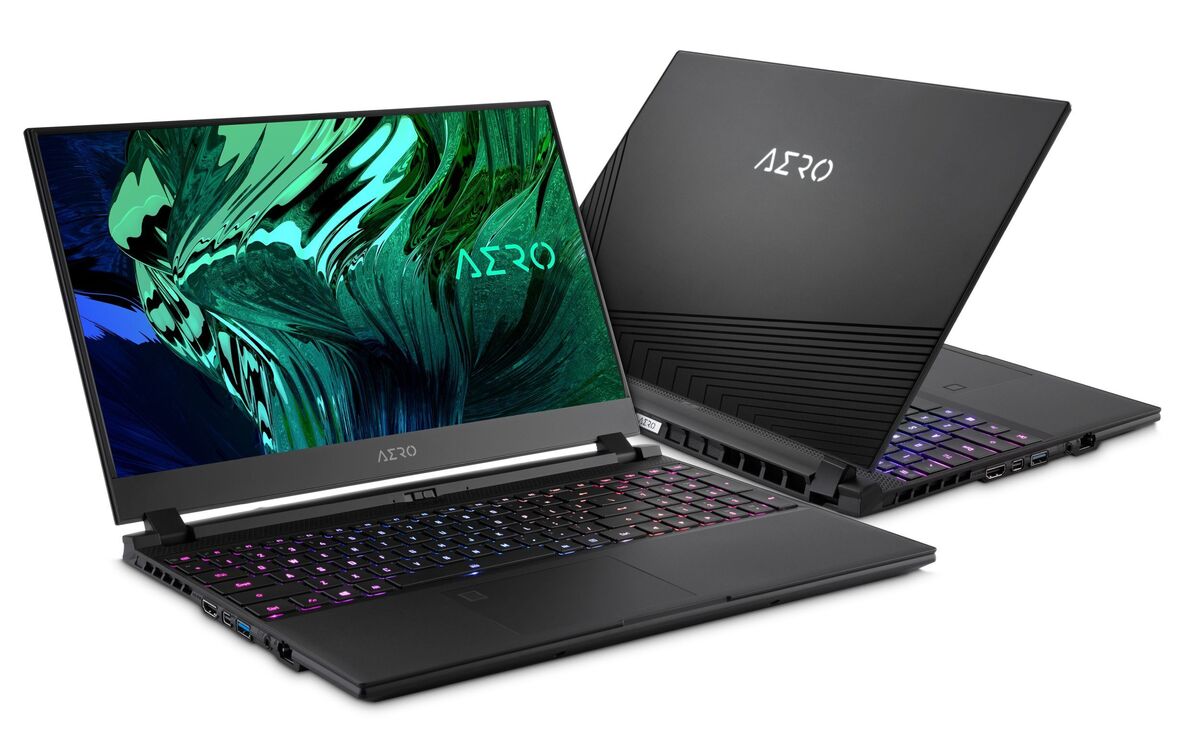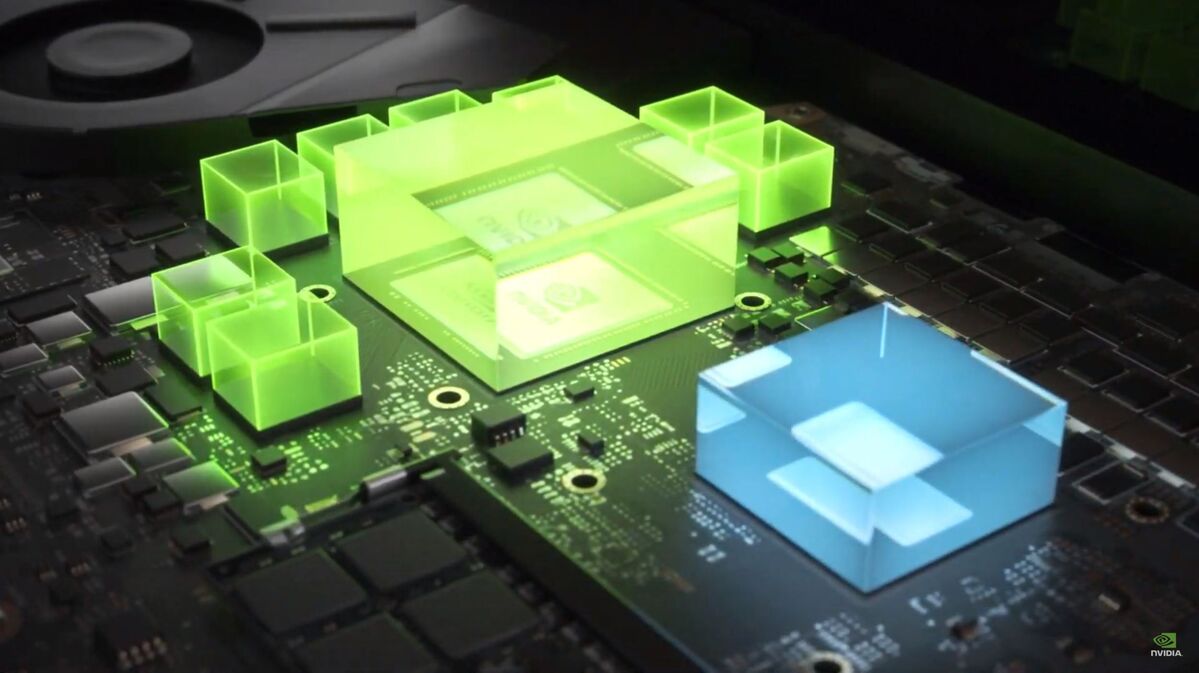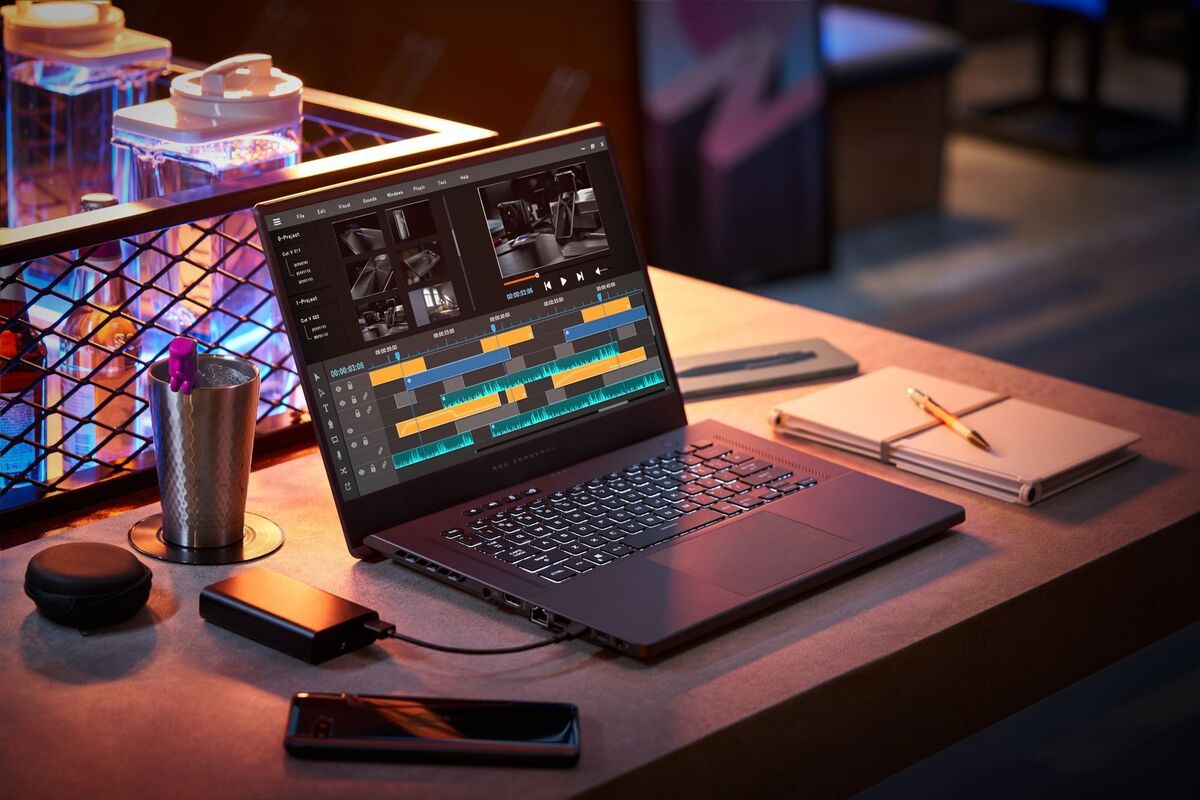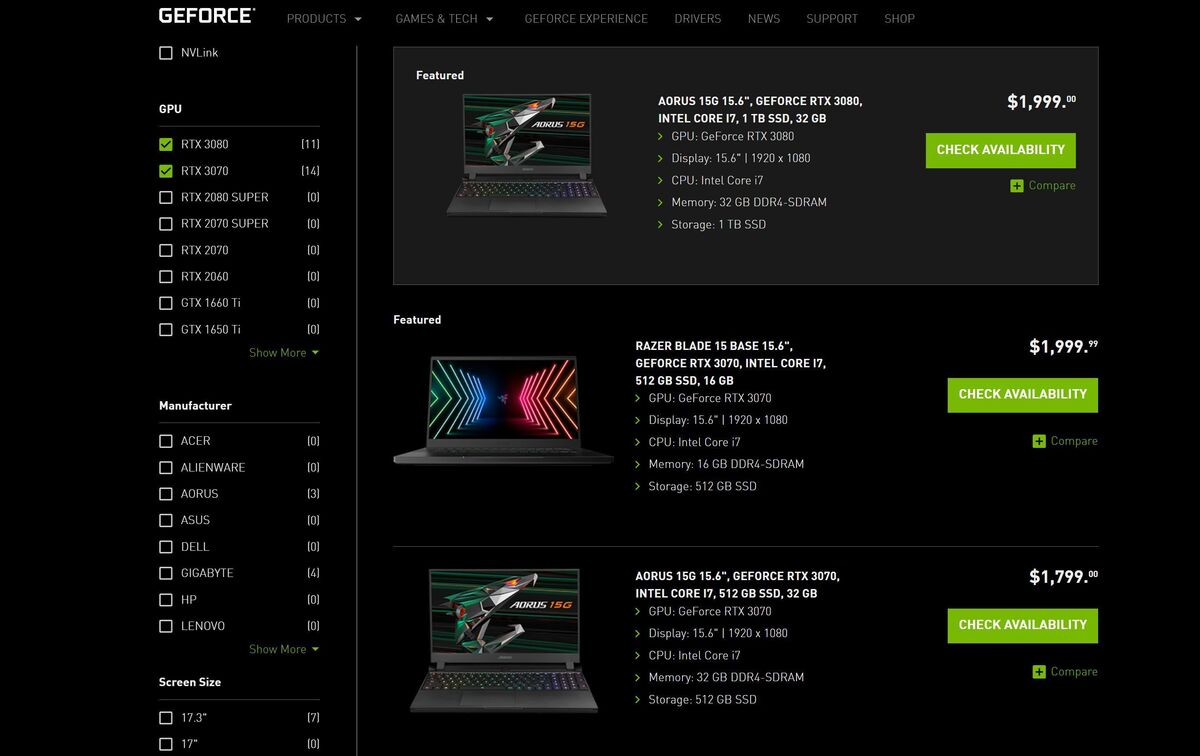How Nvidia RTX 30-series GPUs make laptop shopping much harder - stinsoncappor
Nvidia's side by side-gen graphics give finally arrived in notebooks, and equally you can see in our GeForce RTX 3080 laptop GPU review, the versatile variant of Team Honey oil "A" computer architecture spits unsuccessful frames at blazingly fast rates. But the performance you get from mobile RTX 30-series graphics chips won't necessarily be equal, even between two laptops with the same hardware privileged.
One GeForce RTX 3070 laptop computer power not be as fast as another, for example. And it's even imaginable that in some cases a slower GPU could theoretically be faster than pricier models. Yes, you might (might) see a GeForce RTX 3070 laptop that give the axe match or possibly outperform an RTX 3080 laptop in some games, though we'll need to get a line more reviews trickle in before we can state that definitively. Irrespective, you'rhenium going to want to do a caboodle more homework than before when you're shopping for a gaming laptop computer.
It's all because of some fundamental changes Nvidia made with the specifications for the GeForce RTX 30-series mobile GPUs. Here's what you postulate to know.
GeForce RTX 30-series desktop vs. laptop cores
 Nvidia
Nvidia The laptop versions of Nvidia's Ampere-based RTX 30-series GPUs don't match the eyeglasses of the desktop models.
Earlier we dig deeper into electrical power and clock speeds—the real McCoy to look for in Nvidia play laptops now—it's Charles Frederick Worth noting that these GeForce RTX 30-serial publication GPUs aren't the same ones ground in background graphics card game. The laptop versions of the RTX 3060, 3070, and 3080 put on't cause the same number of CUDA graphics cores Eastern Samoa the desktop models.
- RTX 3080: 8,704 desktop CUDA cores versus 6,144 mobile CUDA cores
- RTX 3070: 5,888 desktop CUDA cores versus 5,120 mobile CUDA cores
- RTX 3060: 3,584 background CUDA cores versus 3,840 mobile CUDA cores
That's a big change from the last two generations of Nvidia's mobile chips. In the GTX 10-series and RTX 20-series, the laptop versions of the GPUs were identical to their desktop siblings, just bu tuned to attractor less power and polish off lower time speeds. No more.
Nvidia didn't tweak the mobile RTX 30-serial publication GPUs in an coherent way, either. The mobile GeForce RTX 3080 takes a big dispatch compared to the screen background version, shedding well over 2,500 CUDA cores. On paper, the RTX 3080 found in gaming laptops has much more in coarse with the RTX 3070 desktop card. The mobile RTX 3070 took a sizeable but non-quite an-as-ludicrous hit to its own CUDA core count, while the notebook computer version of the RTX 3060 actually has more cores than the desktop graphics card. Rabidity.
These are still great mobile graphics options, put on't get Pine Tree State wrong. Just don't expect the same performance out of a five-pound gambling laptop computer with a cut-down version of the RTX 3080 that you'd engender from a hulking triple-slot RTX 3080 desktop card. If you want to have intercourse more, our GeForce RTX 3080 laptop GPU refresh dives deeper into the differences.
Wattage and the muddying of Georgia home boy-Q
 Nvidia
Nvidia The bigger issue for buyers is the extreme flexibility that laptop makers have when configuring an RTX 30-series GPU inside their offerings. As you can see in the graph supra, the token and maximum GPU subsystem power limits vary wildly for each GPU, as do the useable clock speed options. Those are interrelated, as the amount of power pumped into a GPU heavily affects clock speeds and overall carrying out. But laptops need temperature reduction systems capable of dissipating the heat that comes from that, which is the ground Nvidia allows the wide graze of configurations available per GPU. Rating the GeForce RTX 3080 mobile chips for 80 Watts to 150+ Watts lets the chip slip into wizened-and-light laptops and hulking desktop replacements alike.
No of that is inexperient. Chip vendors and laptop makers have been balancing raw carrying into action, better efficiency, and cooling inevitably for years. Notebook design matters. But the issue is that now, you won't necessarily know what sort of approximate range performance to expect when you buy a laptop with a given GeForce RTX 30-series GPU inside.
 MSI
MSI Scoop-Q technologies and index tuning enabled the creation of powerful gaming laptops that weigh under 5 pounds, like the new Gigabyte Aero models pictured above.
Nvidia even retired the Max-Q sub-brand as it typically practical to GPU names, removing some other signal of nomadic- vs. desktop-class operation. Nvidia introduced its Max-Q technology for the GTX 10-serial publication notebook chips, the first that matched the CUDA core look of their desktop namesakes. Max-Q versions of GeForce chips had their wattage shrivelled to greatly increase their energy efficiency, sanctionative the creation of small, portable gaming laptops that are common today, but were unicorns back so.
Dialing those aspects back meant Max-Q versions would be slower than the full-fat mobile GPUs, naturally—just they were as wel labeled as so much. The GTX 1080 was faster than a GTX 1080 Max-Q, which was slimly faster than a GTX 1070, which was quicker than a GTX 1070 Georgia home boy-Q, and so on. It all made good sense.
Not anymore.
 Nvidia
Nvidia Nvidia's Mechanics Boost 2.0 today manages the GPU VRAM power levels Eastern Samoa intimately as the CPU and GPU energy, as start out of third base-gen Max-Q.
Piece previous Grievous bodily harm-Q versions united solely into a chip's total baron, Nvidia says the third-gen version of Soap-Q that debuted with RTX 30-series gaming laptops "is broader, and is a holistic set of political program technologies and design approach to edifice powerful and thin laptops," per a command to Unpleasant Hardware. Now, to boot to tinkering with raw electrical power, the Max-Q brand also envelops Nvidia's Dynamic Promote 2.0 intelligent power management technology, a recently Whisper Mode that uses AI to hit configurable acoustic levels, Advanced Optimus graphics switching, and resizeable BAR support. Making things more complex, laptop vendors can pick and choose which of those advanced features to support.
Those are all great, welcome technologies to be dependable. But muddying up what Scoop-Q way without providing some other way to signal lower-clocked GPUs now makes IT much harder to shop for a gaming notebook.
Which play laptop is better?
Now that Max-Q isn't just a signifier for a GPU's power draw anymore, you won't see "Max-Q" after the GPU's name in an RTX 30-series laptop flatbottom if the Godhead lowered the wattage and time speeds. You'll but see RTX 3060 laptops, RTX 3070 laptops, and RTX 3080 laptops.
Does the gaming notebook you'rhenium considering buying have a very much weaker 60W translation of the RTX 3060 chip in IT, operating theater the full-pursy 115W shape with maxed-come out clocks? Something in between? Which is faster in esports games, a 125W version of the RTX 3070 or an 80W GeForce RTX 3080 laptop computer? Can an RTX 3080 notebook game at 4K like the desktop art tease? What if it's a rotund-loose-jowled 150W-asset model?
 Asus
Asus You knew a GTX 2070 Max-Q laptop generally wasn't as powerful as a standard GTX 2070 laptop computer. Immediately it's more of a crapshoot unless you perform extensive explore on particularised models early.
For its part, Nvidia is encouraging—just, notably, not requiring—its laptop partners to list the tally graphics might (TGP) rating for a knap. "We strongly encourage OEMs to list clocks and other technologies a laptop computer supports, including Advanced Optimus, Dynamic Boost 2, and more," the company told Het Hardware. "Finally, like all laptop features and eyeglasses, it is capable the OEM to market what their particular laptop configuration supports."
Once you have a notebook in your hands, determining its mettle shouldn't exist hard. "To be Sir Thomas More gauzy about a laptop's exact capabilities, RTX 30 Serial laptops now show much information than ever, listing exact TGP, filaree and features subsidized," Nvidia said. "You will recover this in the panel which now reports utmost power (TGP+Boost), and funding for key features including Projectile Boost 2, WhisperMode 2, Advanced Optimus, and others, all of which fall below the Scoop-Q umbrella."
Reviews matter more than ever
That's only helpful after you steal a GeForce RTX 30-serial gaming laptop, though. We haven't seen some examples of vendors listing their laptop GPU's TGPs and clock speeds online contempt Nvidia's claimed encouragement—not even on Nvidia's own website. That's a bummer. Chunkier gaming laptops with beefed-up chilling solutions be given to use the many powerful iterations of a GPU, merely that's non always true.
 Brad Chacos/IDG
Brad Chacos/IDG You won't find clock speed operating theatre power information for a laptop's GPU plane on Nvidia's own RTX 30-series pages.
If you can't discovery TGP and clock speed info for your desired GeForce RTX 30-serial publication gaming laptop online, you'll need to lean against ceremonious reviews—like our GeForce RTX 3080 mobile GPU review, which was tested on a Gigabyte Aorus 17 notebook—Beaver State reports from other users to figure out exactly what you're getting. Hopefully a site or Reddit thread will pop up itemisation these inside information as notebooks start trickling out, peculiarly since Nvidia includes that information in its software control panel. Our roundup of the best gambling laptops will be helpful erst we've reviewed more models.
Simply for straightaway, frequent smarting: One GeForce RTX 3070 laptop May execute very differently from another—and in the right form, a 3070 machine could potentially even give way toe-to-toe with an energy efficient 3080 notebook. It's complicated.
Oh, and Nvidia offers the GeForce RTX 3080 mobile poker chip with either 8GB or 16GB of memory. Good luck down there.
Source: https://www.pcworld.com/article/393984/be-careful-shopping-for-gaming-laptops-just-got-a-lot-harder.html
Posted by: stinsoncappor.blogspot.com

0 Response to "How Nvidia RTX 30-series GPUs make laptop shopping much harder - stinsoncappor"
Post a Comment